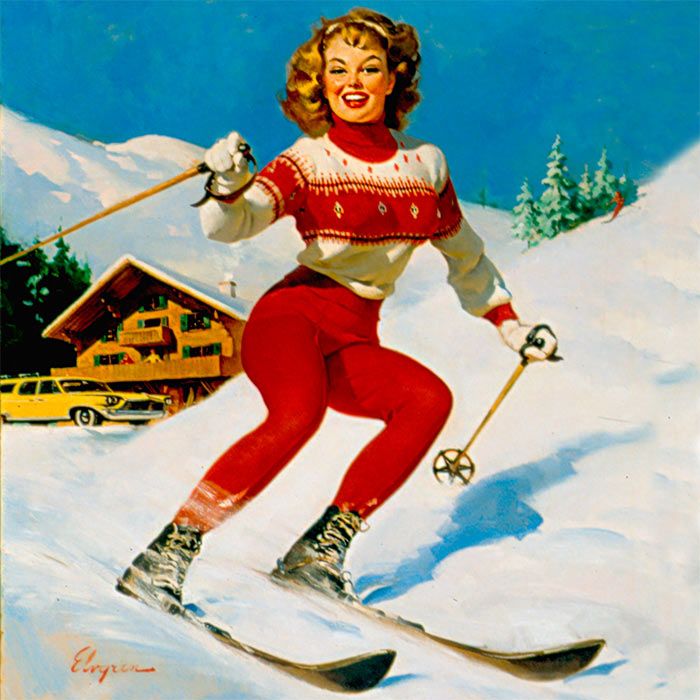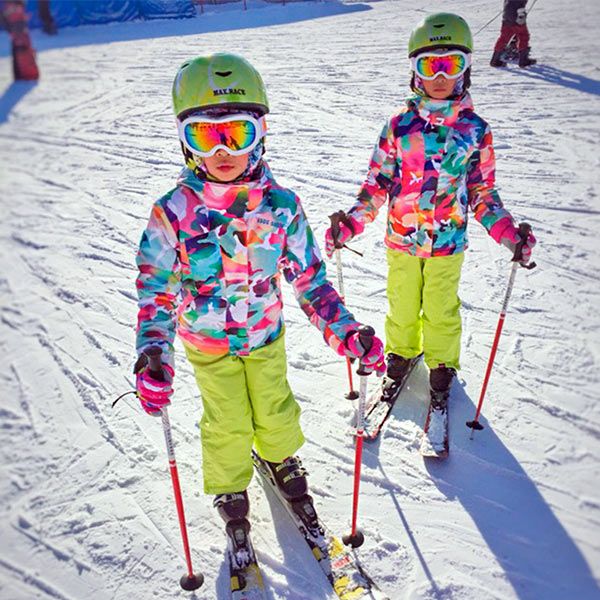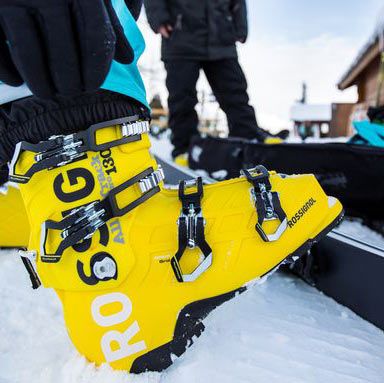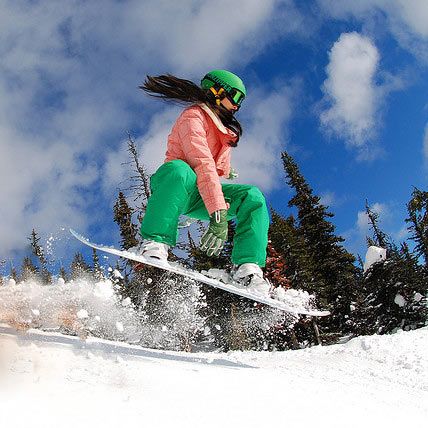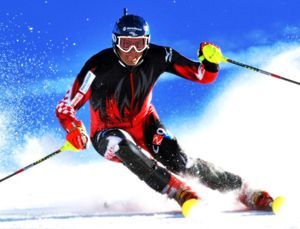 Learn to Ski in the Mountains
Learn to Ski in the Mountains
Winter is gradually gaining momentum, meaning it’s the season of celebration for snow enthusiasts—skiers.
Of course, for real athletes and enthusiastic amateurs, there are no limits: you can ski in the mountains even in summer—in nearby or distant countries, on natural or artificial slopes—but we’ll talk about that another time.
For now, let’s focus on how to ski in the mountains.
The ancestors of alpine skis can be traced to flatland skis used by residents of northern regions and daring polar explorers.
A Short History
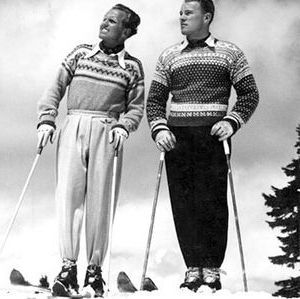 The History of Alpine Skiing
The History of Alpine Skiing
Alpine skiing has only recently become both famous and popular among thrill-seekers and those seeking active recreation. Slightly earlier, it entered the Olympic Games program.
Today, alpine skiing is a stylish, exhilarating, and dangerous type of recreation. It’s not cheap either: for a slope to earn the title of a ski resort, it must be equipped with safe, comfortable lifts, well-groomed trails, and accompanying hotel and entertainment facilities.
Before deciding on a resort, beginners often face another dilemma: should you buy equipment or rent it?
Should You Rent Alpine Skis?
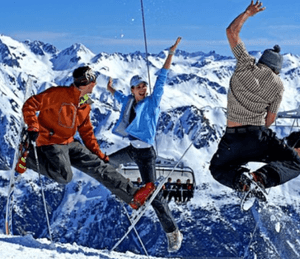 Alpine Ski Rental Costs
Alpine Ski Rental Costs
Rental prices for equipment vary depending on their purpose, quality, features, and even how recent the collection is (last year’s models can be up to half the price).
Long-term rentals often come with discounts.
Throughout the season, special promotions and passes are offered. Prices vary: for instance, you could pay 2,500 RUB for a pass allowing 100 lifts or 20,000 RUB for 2,500 lifts.
In sports parks and complexes in Russia, average prices are as follows:
- 1 hour – 400-1,100 RUB (adult), 300-700 RUB (child);
- 2 hours – 1,000-1,600 RUB, 450-800 RUB;
- 3 hours – 1,100-1,800 RUB, 500-900 RUB;
- 5 or more hours – 1,900-2,700 RUB, 800-1,400 RUB;
- 1 day – 1,400-2,700 RUB, 600-1,400 RUB;
- 5 days – 5,000-10,000 RUB.

Logoysk Ski Resort is a fairy-tale destination in Belarus. Check it out by reading the article linked below the image.
If you’re deciding between skiing or snowboarding, read this article .
Choose rental if you want to ski on new equipment each time and avoid:
- worrying about where to store your equipment;
- paying extra for transporting skis on a plane;
- carrying them to and from the slopes yourself.
Should You Buy Alpine Skis?
 Alpine Ski Prices
Alpine Ski Prices
When carving down a slope begins to bring you joy, every enthusiast starts thinking: should I buy my own skis?
The cost of alpine skis depends on the same factors as rental equipment.
Across the CIS, it’s possible to buy used skis for as little as 500 RUB, though there’s no guarantee of quality, and hidden defects shouldn’t be ruled out. On top of this, you lose the option of a warranty.
Professional universal skis in excellent condition can cost 30,000-40,000 RUB.
In stores, prices begin at around 3,000 RUB for junior alpine skis and 45,000 RUB for adult models.
Take your time making a decision and compare all the models you can find. Finding the right fit may take longer if you have a high arch or wide feet.
If you’re planning a European ski vacation, buy your equipment there—Andorra offers some of the most appealing prices, up to three times lower than in other regions.
Choose to buy if you want to:
- ski throughout the season;
- avoid waiting in rental lines;
- skip paying for rental costs;
- feel comfortable in well-fitted boots;
- have individually tailored equipment;
- break in your skis until they feel like an extension of yourself.
How to Learn Skiing
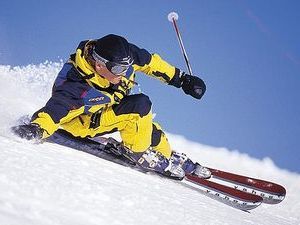 How to Learn Alpine Skiing
How to Learn Alpine Skiing
Undoubtedly, the most effective way is with professional instruction.
This is because the basics are the most important part of learning—they must be practiced correctly from the start until every action becomes second nature.
Even if a dedicated and experienced friend is your instructor, be mentally prepared for certain steps.
Put on Your Skis
Place your skis parallel on the ground, with the poles laid beside them.
Insert the toe of your boot into the front “head” of the binding, then press down with your heel until you feel and hear a click, confirming that the boot is securely fastened.
To remove the ski, press the lever on the heel using your other foot or a ski pole.
Where is Sheregesh Don’t know where Sheregesh is located – one of the best ski resorts in Russia, by the way? Click on the image.
Movies about skiing will keep you entertained when you’re missing your favorite hobby – list here .
Everything you need to know about the Abzakovo resort .
Take the poles
Thread your hands through the straps and grab the handles. Your elbows should be bent at a 90° angle. This will happen automatically if the poles are correctly sized for you.
Adopt the stance
Feet – parallel, lean slightly forward with knees slightly bent. Spread your knees slightly apart for more stability. Don’t tense your body: feel your center of gravity and maintain balance.
Weight – distributed across the entire foot, pole tips – elevated, slightly apart, back – rounded, gaze – forward. If this pose feels uncomfortable, you might be doing something wrong.
Start moving
Get used to the weight of your clothing and skis, then practice acclimatizing to the sensation of sliding. The key here is to overcome the psychological barrier.
Begin by skiing on flat terrain:
- Step one foot forward at a time.
- Glide alternately on the right and left ski.
- Move sideways.
- Always assist yourself with the poles.
Foot positioning during movement should be developed from the start. Learn the classic “snowplow” technique: feet angled slightly inward, with the inner edges of the skis pressed into the snow. Most of your weight should rest on these edges. This technique allows you to control speed and direction while descending.
To learn turning on gentle snow:
- Position the poles in front of you without interfering with the skis.
- Lift one ski and pivot its rear end slightly to the side while keeping the tips close together.
- Then bring the second ski in line with the first one. Using these small steps, you can safely turn in the desired direction.
To avoid sliding downhill, position the skis across the slope line or tilt them onto their outer edges.
Transition to the slope
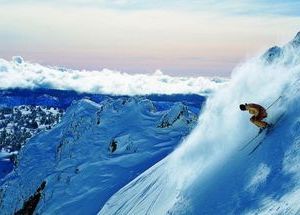 Skiing on the slope
Find a small training slope with a gentle incline.
Skiing on the slope
Find a small training slope with a gentle incline.
Ideally – choose a slope where the skis naturally stop at the end of the run.
Climb uphill using the “staircase” technique – step sideways with small, incremental steps.
First descent
Start by positioning your body facing the slope along your intended trajectory while placing the skis across the slope.
Use your turning skills to orient yourself downward.
Assume the basic stance, press the edges of the skis into the snow, and find your balance.
Lift the poles slightly and slide down to a flat surface.
Your knees should act as springs, absorbing bumps and dips while your upper body remains stable.
Master braking
On longer slopes, braking on your own becomes essential, so practice stopping using the ski edges. Widen the gap between your heels and press onto the inner edges of the skis. The wider the angle between your heels, the more effective the braking.
Dombay Resort Dombay Resort – a true paradise for skiers! More information below the image.
Learn more about thermal clothing by visiting this link .
Learn to turn
Master the “snowplow” turn using the ski edges: while descending, transfer your weight to your right leg to initiate a left turn, and vice versa.
By applying more pressure to the edge of one ski, you reduce the turn radius.
Practice this maneuver until it becomes second nature.
In Summary
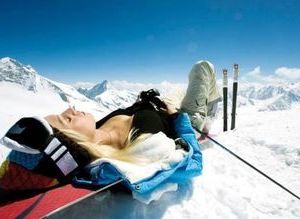 Skiing tips
These are essentially all the basic techniques for skiing.
Skiing tips
These are essentially all the basic techniques for skiing.
All others, with their speed and complex trajectories, are merely derivatives.
Remember, mastery comes with experience and confidence in your abilities.
Final tips for beginners:
- In the beginning, focus on mastering the correct technique for all maneuvers.
- Warm up and stretch before skiing.
- Avoid the slopes if you’re feeling unwell, tired, intoxicated, or overly full.
- Don’t skip meals or hydration – prioritize complex carbs, while limiting alcohol and coffee.
- Never venture off-piste alone; always check the avalanche risk daily (information is available near maps or lifts).
- Don’t ski on closed slopes.
- Do not transition to steep trails right away. It’s better to spend more time mastering flat terrain than ending up injured in hospital.
- Falls are inevitable for everyone – some fall rarely, others after every step. Embrace failure; setbacks don’t mean you won’t succeed.
- Stay cautious at all skill levels and follow the safety rules on the slope.
- Show courtesy – give way to faster skiers overtaking you.
- After skiing, treat yourself to a cup of hot chocolate or mulled wine.
Ski Glossary
Après-ski - mountain entertainment: restaurants, spas, sports complexes; Green – a gentle slope for beginners; Edge – the steel-reinforced bottom edge of a ski; Red – a medium-difficulty slope for confident skiers; Off-piste – off-trail skiing for well-prepared skiers; Snowplow – a braking technique: skis positioned at an angle with tips together; Snowcat – snow grooming machine for slopes; Blue – an easy slope with a slight incline; Ski-stop – a binding element to prevent a detached ski from sliding away on the snow; Stance – a skier’s position while descending; Ski-pass – a lift access pass; Ski-bus – a bus connecting hotels/resort centers to ski areas; Black – a slope of the highest difficulty, steep or/and narrow.
Video
Watch a tutorial on carving – one of the alpine skiing techniques:
Whether they’re your own or rented, basic or “fancy” alpine skis – this is your step into something new, an opportunity to experience sensations like no other.
By carefully choosing your equipment and dedicating time to training, you’ll not only enjoy skiing to the fullest but also, by next season, confidently explain to “green” beginners how to master alpine skiing like an expert.
